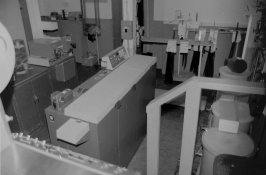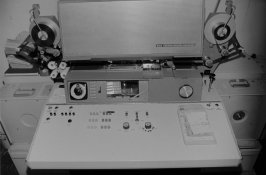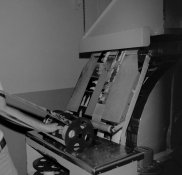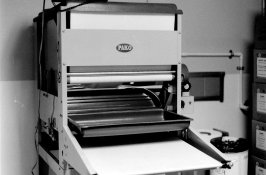I wasn't sure where to post this but this seemed about the closest. Feel free to redirect me.
After my military service in the early 1970s I worked in a medium sized color photo processing lab, you know, the place that the camera store, grocery and drug stores, etc. sent film off to be processed.
As these labs are largely a thing of the past I was reminiscing and wondering how many others on these forums might have worked in them?
I worked in one in Southern California. We did about 3,000 rolls of color film per day. We processed both C-22 on a dip and dunk processor and C-41 on a more modern continuous processor. I worked in the printing department, starting off as a film cutter on a graveyard shift. I was the guy who cut your 35mm, 110, 126, 120 film into strips and reunited it with your envelope. I used a manual blade operated by a treadle. Very primitive. I also learn retouching/spotting so I had something to do if I got ahead of the film guys.
After 8 months or so of that I advanced up to to "printer" and learned operate a printer for primarily 35mm, on a Kodak 2620 color printer. Next to me was our only automated printer, another 2620, and I kept it loaded with film and paper. In slow times I learned to use our other Kodak machines (numbers escape me) that were used to print other formats and paper sizes. During my breaks I'd hand out at other stations and learned how to run our paper processors, one for reversal and one for regular prints from negs.
The lab underwent a reorganization and I was moved to a new position: quality control. I was sent to Kodak training in Whittier, CA where I learned how to set up all of our machines so the color and density output were all the same, how to mix our chemicals, how to track quality with test strips through the system using a Macbeth color densitometer, etc. After that I started coming in ahead of our midnight shift and setting up all the machines and tracking their output and keeping chemistry mixed, which I did at 200 gallons per batch. We also added some automated machines that cut the prints up faster and I learned to do some maintenance on those.
I really enjoyed the job, being a photo lab rat, and it allowed me to take college classes on the GI Bill during the day, and it paid just enough ($3-5 per hour) that I could afford to have an apartment without a roommate. Eventually I left that job and became a drafter/designer in the petro/chem industry.
After my military service in the early 1970s I worked in a medium sized color photo processing lab, you know, the place that the camera store, grocery and drug stores, etc. sent film off to be processed.
As these labs are largely a thing of the past I was reminiscing and wondering how many others on these forums might have worked in them?
I worked in one in Southern California. We did about 3,000 rolls of color film per day. We processed both C-22 on a dip and dunk processor and C-41 on a more modern continuous processor. I worked in the printing department, starting off as a film cutter on a graveyard shift. I was the guy who cut your 35mm, 110, 126, 120 film into strips and reunited it with your envelope. I used a manual blade operated by a treadle. Very primitive. I also learn retouching/spotting so I had something to do if I got ahead of the film guys.
After 8 months or so of that I advanced up to to "printer" and learned operate a printer for primarily 35mm, on a Kodak 2620 color printer. Next to me was our only automated printer, another 2620, and I kept it loaded with film and paper. In slow times I learned to use our other Kodak machines (numbers escape me) that were used to print other formats and paper sizes. During my breaks I'd hand out at other stations and learned how to run our paper processors, one for reversal and one for regular prints from negs.
The lab underwent a reorganization and I was moved to a new position: quality control. I was sent to Kodak training in Whittier, CA where I learned how to set up all of our machines so the color and density output were all the same, how to mix our chemicals, how to track quality with test strips through the system using a Macbeth color densitometer, etc. After that I started coming in ahead of our midnight shift and setting up all the machines and tracking their output and keeping chemistry mixed, which I did at 200 gallons per batch. We also added some automated machines that cut the prints up faster and I learned to do some maintenance on those.
I really enjoyed the job, being a photo lab rat, and it allowed me to take college classes on the GI Bill during the day, and it paid just enough ($3-5 per hour) that I could afford to have an apartment without a roommate. Eventually I left that job and became a drafter/designer in the petro/chem industry.













 It's just that I'm personally very interested in these machines and lenses and want to find out some more details in order to complete my online-article on the matter.
It's just that I'm personally very interested in these machines and lenses and want to find out some more details in order to complete my online-article on the matter.
